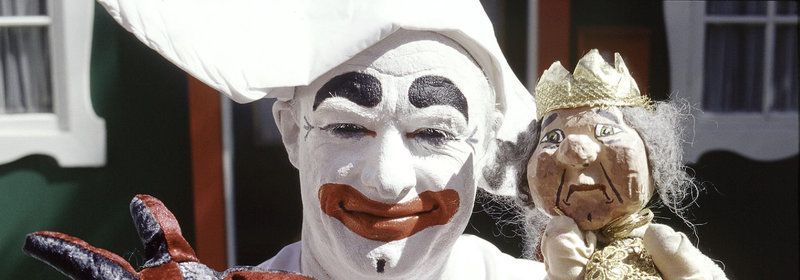Copenhagen - Dyrehavsbakken and Eremitagen
Dyrehaven
Dyrehaven - the Animal Garden - can offer both amusements and contemplation, exiting stories and soul. The area has a wide appeal, and no other Danish nature area has been portrayed so enthusiastically by painters and poets, as it is the case with Dyrehaven.
With its ancient freestanding oak trees, large plains with deer herds, forests, and tunnel valley, Dyrehaven is a piece of ancient Danish nature that has been almost untouched through 350 years.
The trees will stand until they fall over themselves. And when they do fall over, they will be left to perish through nature’s own process.
Dyrehaven is commonly used by guests, who all year is enjoying picnics, running, bicycling, or riding on the hills of Dyrehaven. You can even take a matchless ride in a horse-drawn carriage around the area, if you want.
Dyrehaven - part of UNESCO’s world inheritance
Not only does Dyrehaven have a beautiful landscape - it also has a unique history, going back more than 100 years. As a result of this, it was in 2015 named on UNESCO’s World Heritage List, as part of the parforce hunt landscape in the area - once used as hunting fields by the royal family.
Parforce hunt
Dyrehaven was during King Christian V’s time fivefold doubled in size, as a big part was fenced with 17 kilometers of fence - the part known today is Dyrehaven and Jægersborg Fence. The king had five straight paths created. These path meets at the current Erimitageslette.
In parforce hunting, 20-30 hunters by horse with resounding horns and barking dogs follow a red deer until the point of total exhaustion. The finest of the hunters, usually the king, can then get of his horse and kill the animal with a short hunting blade. King Christian V was so fond of the hunts that he held them 9 out of 12 months a year. Only in May, June, and July, when the deer calves were very small, there were no hunting. Parforce hunting became prohibited in 1777.
Dyrehaven is today still active as animal residence and hunting area. The herd of around 2000 animals are regulated by the Danish Department of Nature’s shooters and by the hunts of the royal family.
Every winter, 700 animals are put down. Every summer, 700 calves are born. They are either sold as meat or as living creatures to other parks of its kind in the world.
Eremitageslottet
Eremitageslottet - Erimitage castle - was built by Christian VI in 1736. The castle is designed by Lauritz de Thurah. The castle replaced Hubertushuset - a timbered house in two floors - which King Christian V had built.
The castle is a fine example of de Thurahs flair for buildings and one of the Late Baroque’s finest works in Denmark. The house plan is symmetrical on all four floors. The castle is renovated several times - latest in 1979-1991, where the castle went through a thorough outer renovation.
The lonely castle, crowning over Dyrehaven and visible by ships at Øresund, has only short term been used as residence, but several kings has used it for hunting dinners, just like the royal family today does.
The story of Dyrehavsbakken
With its 436 years, Dyrehavsbakken is the world’s oldest amusement park. It has had people pilgrimage to the place since the 1500s - due to the legend about Kirsten Piils source and its healing powers.
When King Frederik V in 1756 officially opened Dyrehaven and gave free access for the public, showmen and outlet operators started putting their tents up every year around solstice. Here, the many visitors could get healed by the powers of the famous source and have a joyous night with entertainment from the many showmen.
In 1840, Dyrehavsbakken were officially open in 8 weeks over summer. This gave the many tent operators the possibility of a more permanent stand. At the same time, competition grew near Copenhagen. The largest of these was Tivoli, which today is still lying in the center of Copenhagen, but back then were outside the city’s gates.
In the beginning of the 1900s, more and more amusements opened at Dyrehavsbakken. In 1932, Europe’s, back then, largest wooded roller coaster was ready. Shortly after came the bumper cars and the rodeo track to the collection. Today, Dyrehavsbakken has uncountable roller coasters, Ferris wheels, drop towers, and many other fun and extreme amusements. Actually, Dyrehavsbakken has more riding amusements than any other amusement park in the North. Besides that - 8 arcades and 36 game- and shooting tracks.
Read more about Dyrehavsbakken here: www.bakken.dk

Gps: 55.774931, 12.573345
Fodsporet - walking and cycling route
Ruds Vedby - The gardens of Birkegården
Skortskærgaard Bed and Breakfast and visitor farm - host article
Rosenborg Castle - the entire Danish treasury
Holmegaard Værk - classic Danish glass art
Faarevadskrog BB - host article
Skibene på Holmen
The world’s largest Viking hall
One of the world’s 100 best experiences
Kaptajnhuset BB - host article
Copenhagen - Dyrehavsbakken and Eremitagen
Kragenæs - Dodekalitten
Korsør - Sprogø
Møns Klint - And Geo Center
Roskilde - The Viking Ship Museum 1
Roskilde - The Viking Ship Museum 2
Roskilde and Lejre - Its Viking country
Northwest Zealand
Zealand - Specialties
Zealand - Holiday Experiences